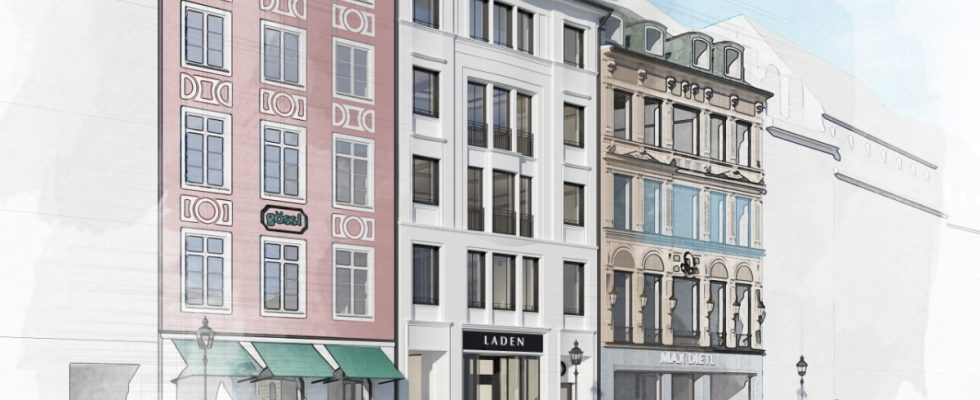Residenzstrasse is one of the most exclusive addresses in Munich – from house number 1, where the Palatinate Association of Bavaria operates its Palatinate wine tavern, to house number 27. The former Palais Preysing houses a fashion store, doctors’ practices and offices. There, directly on Max-Joseph-Platz and opposite the opera, a major intervention is now planned in that row of old town houses. The Holler Foundation, as the owner of the so-called Bogner House, which houses one of this company’s fashion stores, wants to demolish it and replace it with a new building.
The plans have already caused an uproar in advance – not least among neighbors who fear years of construction in front of their door as well as the consequences for the face of the row of houses. In the urban design commission, which was now discussing the project, the concerns primarily revolved around something else – namely the planned facade of the new building.
Before the panel’s experts presented their criticism, Tobias Nöfer from the Berlin architects’ office of the same name first presented the plans of the non-profit Holler Foundation. This is “not so well known because it doesn’t value being known”. However, the architect emphasized that it is certainly significant, among other things because of its commitment to the SOS Children’s Villages. In addition, the Holler Foundation, which does not want to comment on its project on Residenzstrasse, is “a developer who places great value on quality – and will remain a portfolio holder,” emphasized Nöfer. According to him, the foundation plans to demolish the existing building in order to build a building of a similar shape and size, which will continue to house offices and retail.
The architect cited “several problems with the building” as reasons for demolition instead of renovation – from the lack of accessibility to fire protection and outdated building technology. As part of the new building, the rear building will have two additional floors; Approval has already been given for such an increase. The approximately 100 square meter inner courtyard will be retained, emphasized Tobias Nöfer. In the future, the building technology will be housed in a completely renovated basement.
Looking at the facade of the row of houses, he spoke of a “big potpourri”, and this diversity “probably makes the appeal here”. After clear criticism from the city’s heritage manager and the monument protection authority, the original plans for the facade have already been modified, said the architect. What has been retained, however, is a “stronger centering” with a raised entrance area and larger windows in the middle – and thus a departure from the previous five-part structure.
However, the architects on the commission thought little of these plans. For her, the facade was “too historicizing,” said Ruth Berktold, who wanted “more simplicity.” Burkhard Körner from the State Office for Monument Preservation also advocated for an “even calmer facade”, although considering the changes compared to the first draft, he said: “We are on the right track.” With regard to the planned demolition, the Freising landscape architect Doris Grabner regretted “that no gray matter can be used here”. FDP city councilor Jörg Hoffmann, on the other hand, showed understanding for this: “I have no problem with building a new building on this site, because the arguments are valid. And if the neighbors say that they then have a construction site – yes, that’s the way it is .”
From a building planning and building regulations perspective, the project, for which only a preliminary building application has been submitted so far, is permissible anyway, explained a representative of the local building commission. In addition, the building in question – unlike many of its neighboring houses – is not an isolated monument. In its conclusion, the urban design commission ultimately agreed to approve the plans in principle. “However, the facade facing Max-Joseph-Platz is still criticized by some,” summed up city councilor and meeting leader Anna Hanusch (Greens). “A further reduction would be desirable here.”

